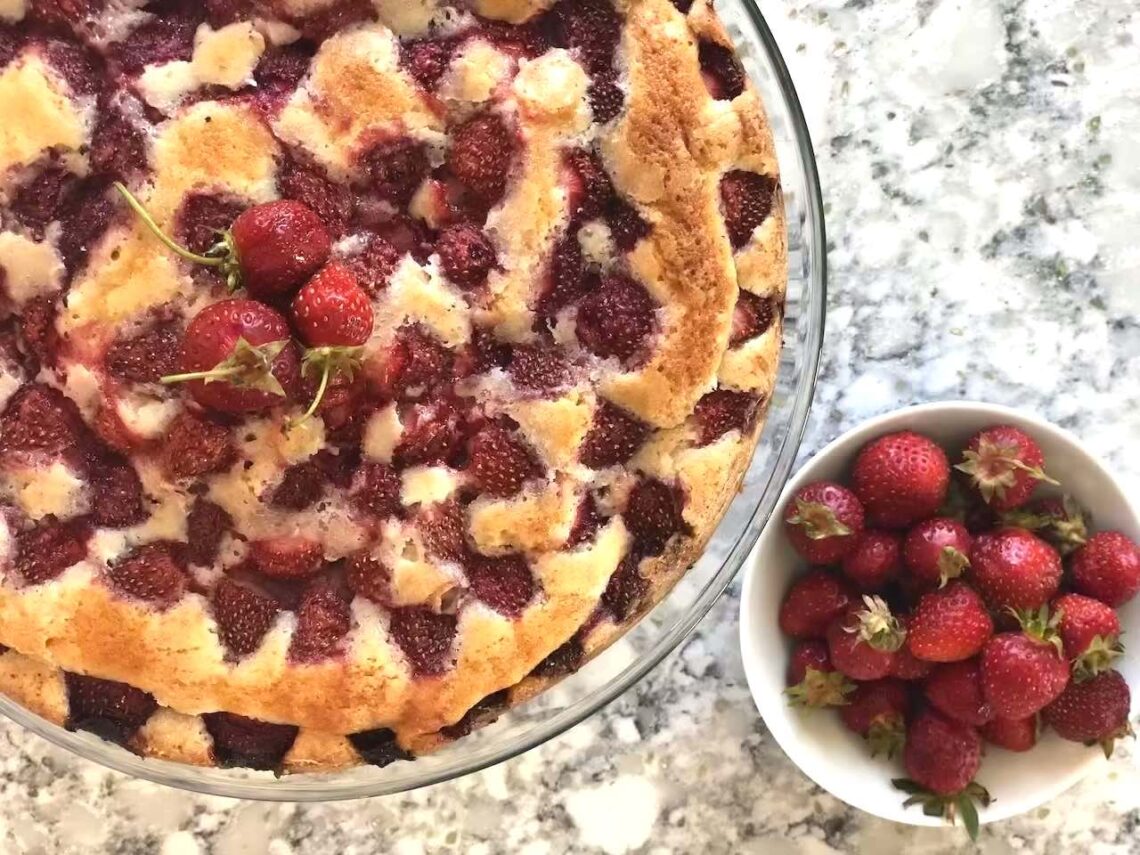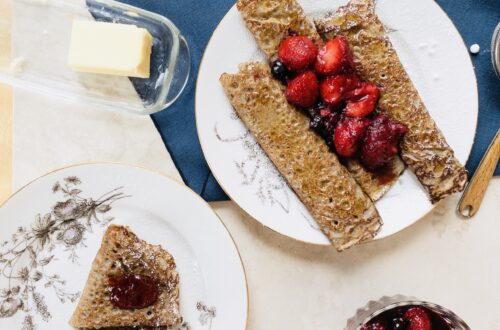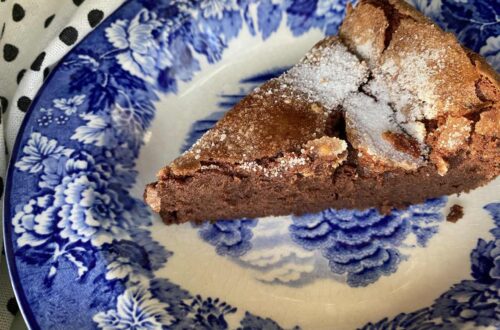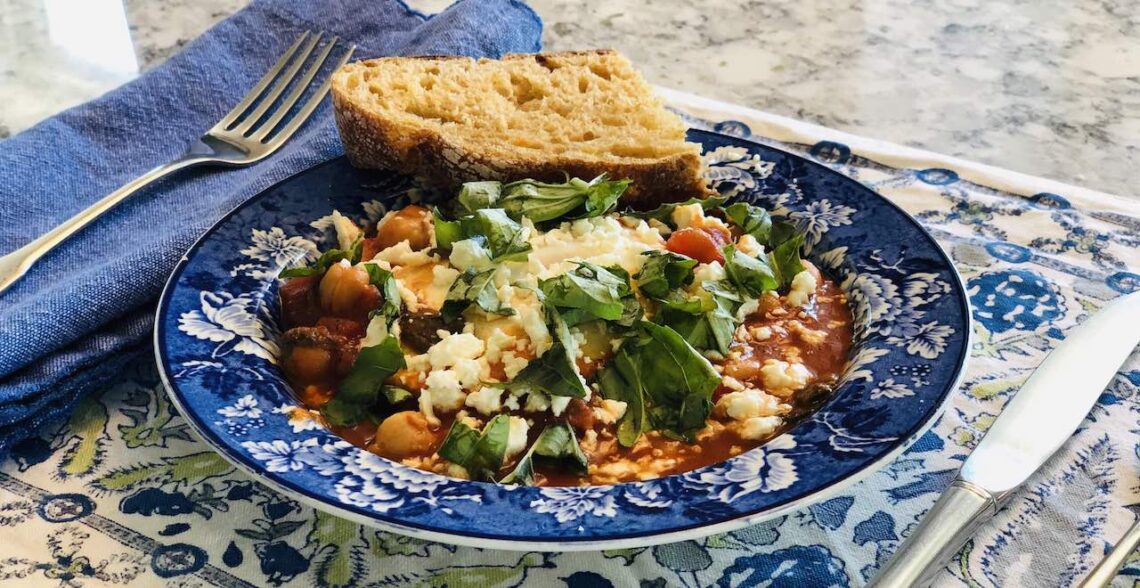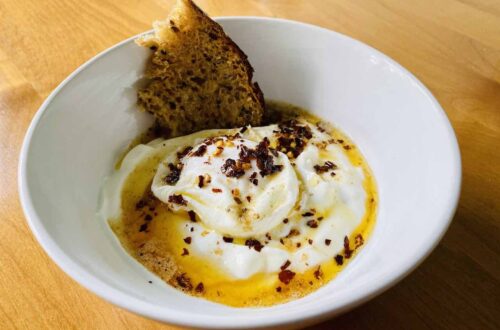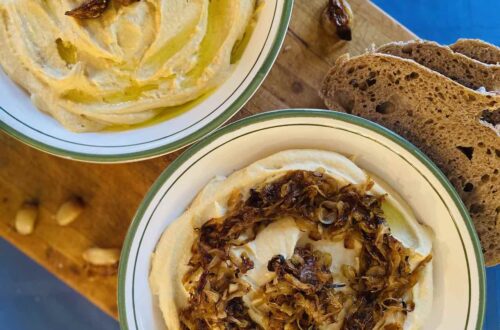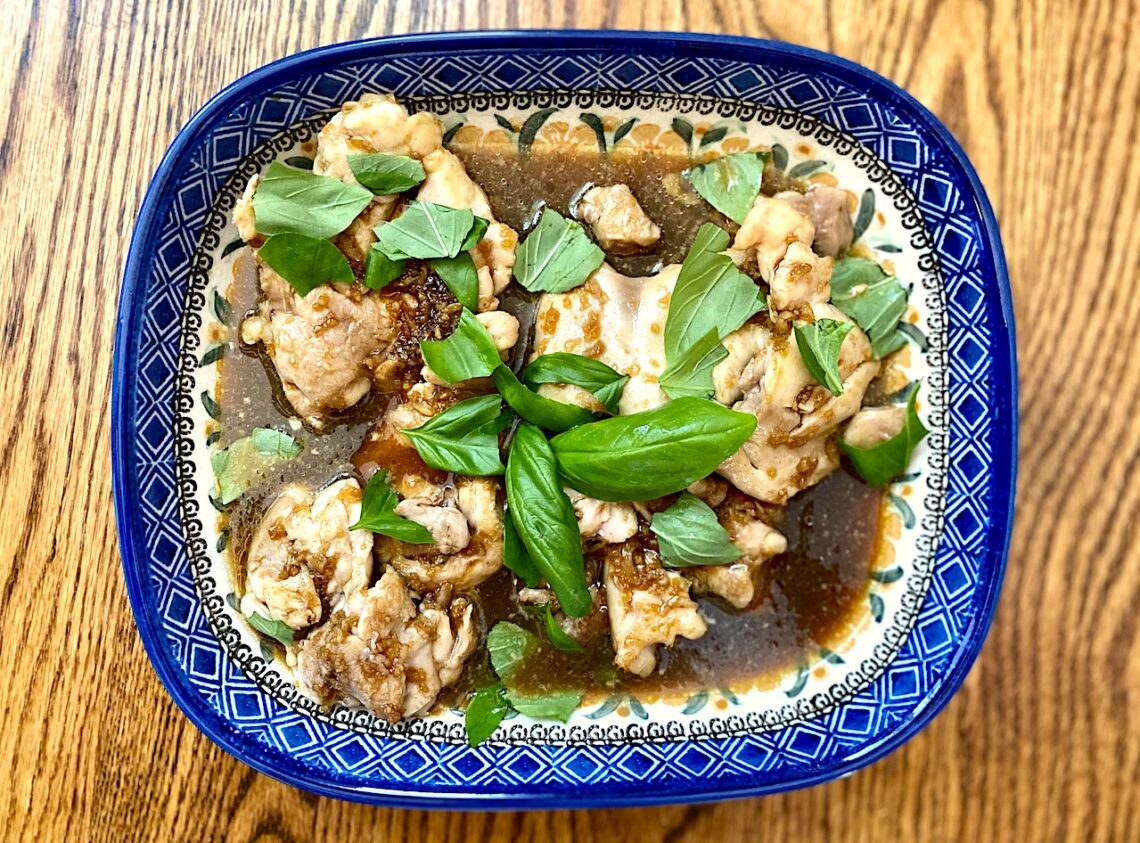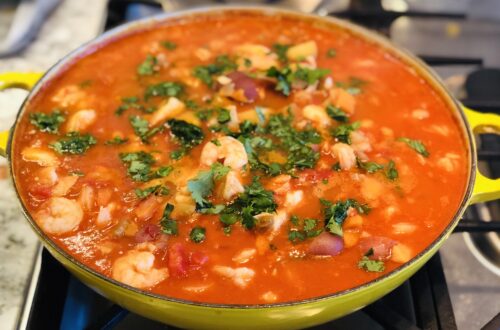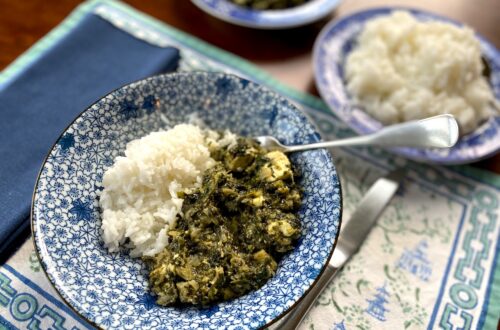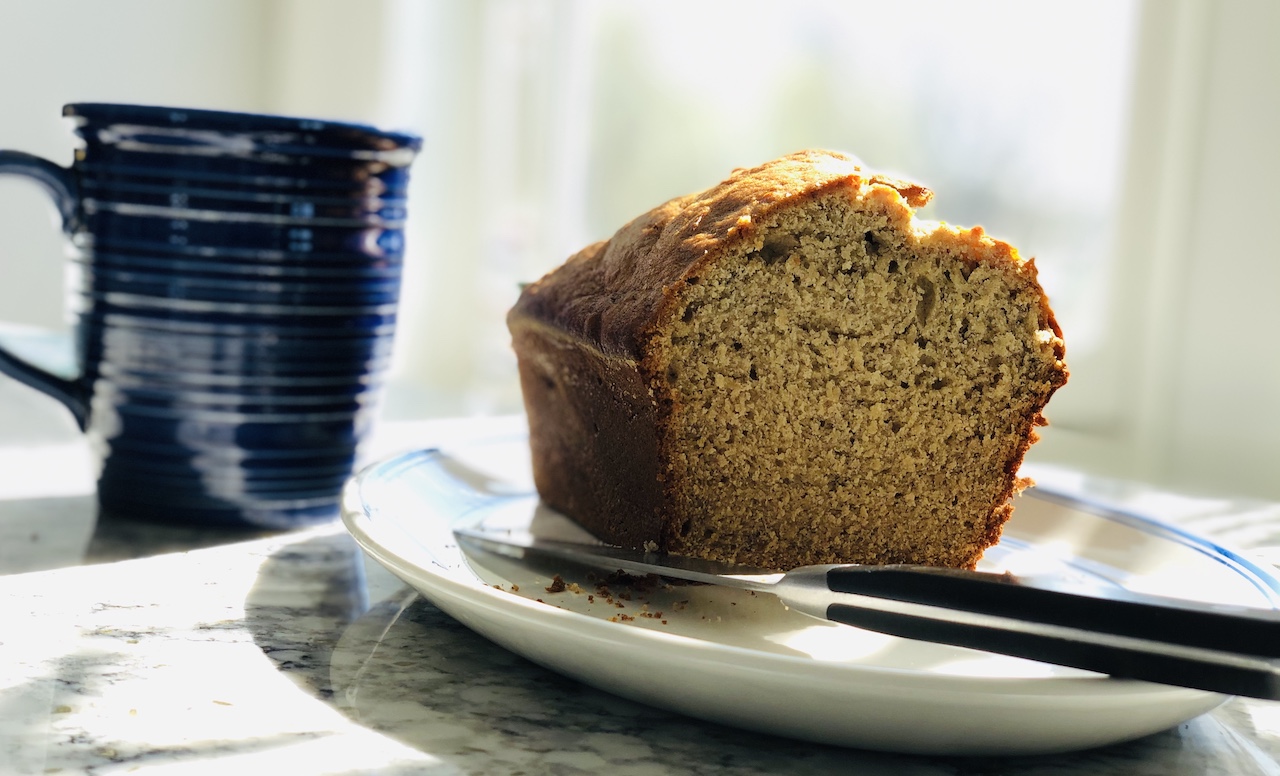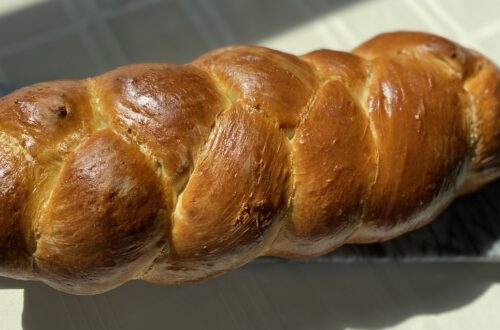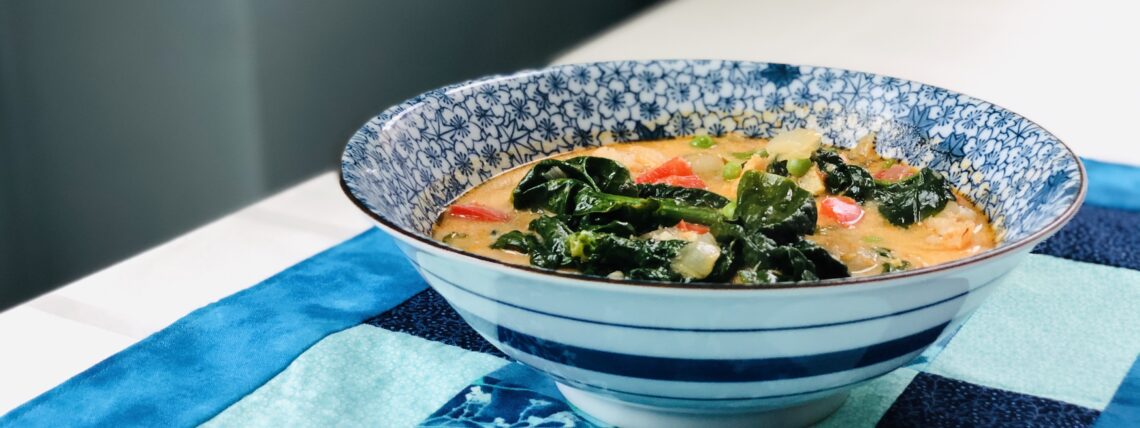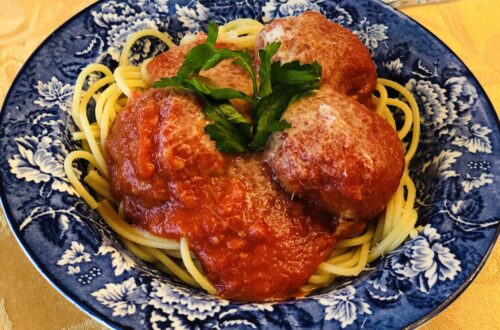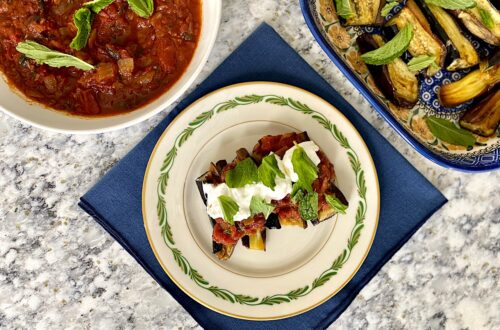-
Strawberry Cake
Every summer in Berlin, little huts from Karls Erdbeerhof (Karl’s Strawberry Farm) pop up outside of train stations and sell strawberries by the kilogram. This is my favorite time of year in Germany, where I lived for five years: the days are long, everyone is outside, and the world feels at peace. Plus, there are strawberries – and lots of them. When I first moved to Germany, these luscious and sweet strawberries were a revelation, so different from the perfectly shaped, watery-tasting ones I had grown up eating.
This cake is all about strawberries and, to me, it tastes like summer. It tastes like a picnic at Tempelhof, the former airport turned public park in Berlin, where crowds gather as soon as the weather permits. It tastes like the joy of sitting on the grass for hours, eating and drinking as the sun sets and friends come and go. It tastes like the carefree feeling of summer in Berlin.
As you could probably have guessed, picking strawberries is neither easy nor carefree. It’s difficult work that involves stooping down and squatting for hours at a time. Workers must move quickly and know which berries are ready to be picked, while also being gentle with the berries to avoid bruising them. Pesticides are also a major problem. According to the Environmental Working Group, strawberries are “the fresh produce item most likely to be contaminated with pesticide residues.” This is true even if the strawberries are both rinsed in the field and washed before being eaten. 98 percent of strawberries tested by the federal government had pesticide residue on them. While there is limited data on these pesticides’ effects on workers, there is evidence that pesticides and fumigants can lead to increased risk for cancer, harm child development, and may cause birth defects.
-
Chickpea and Spinach Shakshuka
Last summer I was studying for the bar and decided to stay in my law school apartment – with no air conditioning. It was fine for the first four weeks, but in the few days before I moved out the real New England summer hit. It was in the mid-90s and humid, and my apartment seemed to suck in all the heat from the street. I dripped with sweat just sitting in my kitchen, as I re-learned contract law and tried to understand what a secured transaction was. One night, desperate for decent food but too lazy to go buy any, I looked around my kitchen and found a jar of tomato sauce, a can of chickpeas, and frozen spinach. I went to my computer, googled “tomato sauce chickpeas spinach” and this recipe popped up. In that moment, I was hoping for a mediocre dinner and instead I got this.
This is a simple recipe. It’s made using a jar of tomato sauce (for my European friends, I’d suggest cooking down about two cans of tomatoes into a sauce with onions and basil), chickpeas, and spinach – the perfect pandemic dinner. But despite its simplicity, the milk provides a creaminess that makes the tomato sauce richer. And let’s be honest, yolky eggs in just about anything are delicious.
-
Sweet and Spicy Chicken
I take no credit for this recipe – I straight up stole it from my father. He found it (in this blog, which really deserves all the credit), he made it, and he made it again (and again) when we kept asking for it. (Also: how did my father end up on a food blog??). It’s everything I want from a simple chicken dish: sweet and spicy, bright and tasty, with a little bit of sauce that tastes great on everything (rice, potatoes, the salad next to the chicken on the plate). To be fair, the sugar that goes into the sauce may have something to do with how good it is. It also helps that the chicken is tenderized by being beaten with a mallet (or an ice cream scoop or a rolling pin). In these pandemic times when we are all still stuck at home, pounding chicken breasts is also a great way to let out some pent-up frustration. (But be careful – I was a bit too enthusiastic and chipped a plate).
I wanted to use this recipe now because I think it’s important to talk about labor conditions in the meatpacking industry during this pandemic. The media has covered the issue pretty well, but it’s still worth emphasizing the risks inherent in working in these plants – both during the pandemic and before.
-
Banana Bread
When I first moved to Berlin in 2011, a fellow American who lived down the hall gave me this recipe. Although that was almost a decade ago, it has remained my go-to banana bread. It’s what I made when I felt homesick in those first couple of years in Berlin and what I made to give my German friends a taste of “American” baking in my later years in the city. (My friends can attest to the number of times I showed up at parties – and soccer practice – with this very banana bread). It’s what I tried (and failed) to bake when I had a terrible day in law school during 1L and it’s what I still make when I need a quick and easy dessert for something.
But bananas, oh no. I love bananas and could eat them every day. And I’m not alone; bananas are Americans’ favorite fruit. Unfortunately, bananas have a deep and ugly history. (Apologies to my friend who, while I was considering starting this blog, said to me: “Please just don’t ruin bananas, it’s my pandemic staple.” Really, I’m sorry.) While Chiquita presents itself as a fun fruit company with its own little jingle, the truth is much darker. For decades, companies like Chiquita and Dole harmed communities, especially in Central and South America, in order to profit off of bananas.
-
Thai-Inspired Shrimp and Vegetable Soup
I stumbled across this soup during the early days of the pandemic and instantly fell in love with it. I was cooking it while on Zoom with friends one Saturday night when, from off screen, they heard a “yummmmm, wow!” as I stirred and tasted it. Still, even as I was tasting it, I realized it was missing something – vegetables. And so, the spinach and peas made their way into the soup, never to leave. Without these vegetables, it’s a good soup with a warm, rich broth – and shrimp! But with them, it’s a full and filling meal (plus it’s helped to convince my mother that I do, in fact, eat vegetables). Because I was cooking this during the pandemic with limited grocery shopping, I never did add the cilantro. I assume it tastes great here and would certainly add it if I had any.
While I could write about coconut milk or garlic or some other ingredient, for this first post I want to focus on the soup’s focal point: shrimp. I love shrimp. Shrimp with cocktail sauce, in linguine, in soup, really in and with anything and everything. And I’m not alone. On average, Americans eat 4.4 pounds of shrimp per year. Although canned tuna used to be the seafood most eaten by Americans, 2001 shrimp took the lead and has held that title ever since. We often think of shrimp as something fancy and upscale. In reality it has become a staple of the American diet, in large part based on cheap – and often sketchy – imports.
